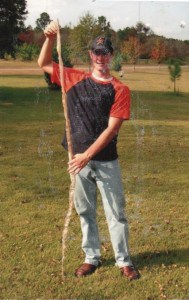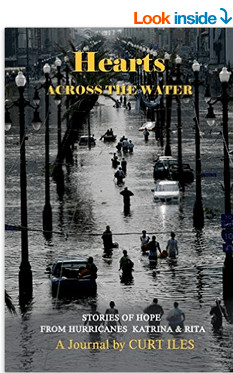
A Long Snakeskin
My nephew found it near the barn at my father-in-law’s home. It was by far the longest intact snakeskin I’ve ever seen. We measured it at six-and-one-half feet long. There was no doubt with its length and thinness that it was a Texas Rat Snake, or as we call it, a Chicken Snake.
The Chicken Snake gets its name from how it loves to hang around barns and old buildings. Its favorite food is rats but any farmer will also tell you how it loves to get eggs or baby chickens for supper.
It is a constrictor that kills its prey by squeezing it to death, then unhinging its jaws to swallow objects that look impossibly large. I’ve killed chicken snakes with a huge bulge in its midsection due to a swallowed rabbit or bird.
Due to this snake’s ability to climb poles or trees to get into bird nests, a chicken snake in my yard is a dead snake. However, one in the woods might get a reprieve and a second chance.
I proudly brought this long snakeskin home to Dry Creek. I’m fascinated with all things “snaky” so it made a wonderful conversation piece hanging in my camp office. Everyone commented that it was the longest Chicken Snake skin they’d seen.
It hung there as the days dragged into weeks after Katrina. Our evacuee guest load gradually dropped everyday, but even then we still had many New Orleanians with us for a longer term stay than they, or we, had expected.
It concerned our staff how many seemed to bring more and more items from home each time they went home to inspect during the “look and leave” days in Orleans Parish. Our friends in our Adult Center, the Dry Creek White House, or as guests sometimes call it, “The Dry Creek Hilton,” especially seemed to be getting comfortably at home. This twenty-six-room facility features hotel-style private rooms complete with private baths.
Our staff noticed that many of the evacuees had made no plans for moving out or moving on. We reminded ourselves that they had just suffered the greatest shock of all in life: losing their homes and many of their material possessions. The emotional toll of losing so much suddenly naturally creates a paralysis of uncertainty and confusion. In spite of our staff’s concerns, everyone was committed to taking care of these new friends however long as needed.
At the same time, we offered assistance in helping evacuees find local housing. It was very touching how many families in our area opened their homes for evacuee families. Others had rent houses or apartments offered for free use.
Everyday we received calls or e-mails from churches all over America offering help. These messages all had this central theme: “We would like to adopt several families to come to our town. We will provide transportation to our area, six months free rent, and jobs. We want to help.” It was so touching how Christian churches compassionately opened their hearts.
However, few of our evacuee families took up the offers. It was not a matter of any lack of gratitude, or even a fear of starting all over. Rather, it was an uncertainty of what direction to go. Many had lived in the New Orleans area all of their lives, and had homes and jobs. It was not easy or even realistic to pick up and leave.
Our two church groups had evacuated as a church family and committed to return, or relocate, as a group. We admired and supported that.
Brother David Rodriguez, pastor of the Horeb Hispanic Church, later related how upon returning to later live in the New Orleans area, he encountered many pastors who lamented, “My church is gone, my people are scattered all over the country, and many are not coming back.”
They would then ask Bro. David, “What about your congregation?”
He then could respond, “All 150 of us left as a group, stayed as a group, and have now returned as a family.”
Many of our evacuee families planned to stay at Dry Creek until the schools in the outer sections of New Orleans re-opened. For most of them, this date seemed to be early in October. Other families just weren’t sure where or what to do next.
As we talked to a particularly helpful church in Minnesota, they just could not understand why out of over seventy-five families in need, none would take up their generous offer of coming north for a new expenses-paid offer.
Finally I just had to be honest with the Minnesotans, “These New Orleanians have lost so much and are just unsure of making big decisions right now. They are in a type of shell shock.
However, I must level with you: most Southerners do not live in Minnesota for one reason—it snows there and is too doggone cold.
In fact, we’ve heard snow stays on the ground most of the winter, and it is extremely cold for weeks at a time. We all live in the south for a reason—we don’t want to live where it snows all winter, and you have to put a heater on your car engine each night.”
Of course the Minnesotans are thinking, “So you choose to live where hurricanes blow in, it stays near 100 degrees for weeks at a time, and your humidity makes it feel as if you are in a sauna when you go outside.”
Now most Northerners were much too nice to say that, but in so many words those were their incredulous thoughts.
Back at the camp, as mid-September approached (this was long before Rita was anything more than a woman’s name instead of a hurricane), our staff set Saturday, October 8, as the official day the City of Hope shelter would close. We were committed in the interim to helping everyone find lodging in our area or otherwise.
As we discussed this one day in an office staff meeting, the concern and tension was evident. Our loving staff are the best people in the world, but by now we were all exhausted both physically and emotionally. Each person shared his or her understandable concerns as to how long we would, and could, go on.
I excused myself and went to my office.
I returned with the snakeskin and announced, “Well, if nothing else works before October, we’ll get the snakeskin out. If we wrap it around a table leg in the White House lobby, those city folks will be out by the end of the day.”
It was just the tension breaker we needed. We laughed and laughed at the mental picture of New Orleanians finding a six-foot long snakeskin in their building.
I’ve seen country women move their entire family out until their husband or pest control found a chicken snake hiding inside the house. The fear of the unknown and unseen is a powerful tool.
My father-in-law’s snakeskin was just the item our staff needed to laugh about a seemingly unsolvable problem. We used it as an inside joke for the next week. We were reminded that when you can laugh at a problem or uncertainty, it loses its size and ferocity.
Now I want to add a disclaimer: We would have never, under any circumstances, put that snakeskin in the White House.
Not until October 9th.
Seriously, the Lord sent the snakeskin for us to laugh together. Humor was a needed commodity as the days wore one.
We never had to use the snakeskin to clear the White House. Something else did it much better than a serpent could: Her name was Rita. As you are aware from the other stories in this book, over 350 evacuees rode Rita out at our camp. About sixty of them were residents of the White House.
Hurricane Rita, as it did all of Southwest Louisiana, hit us hard. We lost our electrical power, water, and all communications. Having no pressure on the community water system was particularly a tough blow. We had filled the camp swimming pool for commode flushing water but drinking and cooking water began to be in short supply.
It was also evident that these conditions were going to be long-term, especially concerning electrical power. This hit everyone very hard in our camp facilities. No power meant no air conditioning, and the days after Rita were brutally hot and humid.
Suddenly, as if a snakeskin had been found in every dorm, each building, and the White House, our evacuees began to leave—one by one, family-by-family, and church-by-church. It was with great mixed emotions that they left.
It was also with these same deep bittersweet emotions that our staff watched them go. We had bonded through extremely trying conditions, especially for them, during these weeks. They had become more than evacuees or even our guests—they had become family.
Although we promised to visit back and forth and even hold a Katrina/Rita reunion in a year or so, we knew it would never be the same. Some we would never see again. None of us could recreate what had occurred on these grounds for the last months
The camp became suddenly much quieter and even lonely with only a few dozen evacuees remaining. It reminded us of when summer camp ends. We’ve had several thousand screaming and playing teens and children week after week and all of the sudden the only sound is the barking of a camp dog and the faint sound of a potato chip bag blowing across the asphalt parking lot.
I went to the White House on that Sunday after the evacuees left. This big building, with its inside hallways, big lobby, and two meeting rooms, was quiet and empty after thirty-three days of being filled to capacity.
In fact it was so quiet, I believe I could have heard a snake’s skin rubbing against a wooden table leg as it slithered along the carpeted floor.
Nah, that was just my imagination.

 Creekbank Stories Curt Iles, Storyteller
Creekbank Stories Curt Iles, Storyteller
